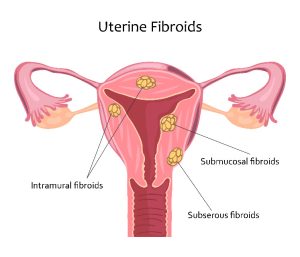
The growth of uterine fibroids can affect women of all ages. One of the main signs of suffering from this particular medical condition is that fibroid-related weight gain causes significant body changes. Moreover, untreated fibroids can lead to: profuse bleeding, anemia, cancer and infertility.
The Basics of Uterine Fibroid Embolization
Uterine Fibroid Embolization (UFE) is carried out by an interventional radiologist through a tiny incision. Phoenix fibroids treatment specialists say the embolization shrinks fibroids by blocking off their blood supply through the injection of small particles into the arteries providing the blood flow. The entire procedure is performed by carefully navigating a catheter under image guidance. The patient is awake during the procedure, but local anesthesia is always employed to keep the patient relaxed. Moreover, the patient is also sedated to avoid experiencing pain or discomfort. The procedure itself lasts an hour per average. After that, post-operative observation usually lasts twenty-four hours and the recovery period is no longer than a week.
Results and Potential Risks
UFE results include: fibroids shrinkage by forty to seventy-five percent during the first year, uterus shrinkage by twenty-seven to fifty-nine percent and fibroid symptoms alleviated completely during the first few months. Nevertheless, there are also potential risks that consist of: technical failure, profuse bleeding, blockage of blood supply to healthy tissue, infection at the site of incision, allergic reaction and injury to the uterus.
Another major complication that can occur is the post-embolization syndrome (PES) which manifests as: vaginal bleeding for several weeks, unusual discharge for a month and heavier menstrual cycles for a year. Nevertheless, PES is self-limiting and usually resolves within weeks. Conversely, one of the most feared and dreaded side effects of UFE is irreversible: in rare cases, uterine fibroid embolization can cause a change in ovarian function, which, in turn, can lead to ovarian impairment.
Disqualification Criteria
The disqualification criteria for UFE include: pelvic infection, bleeding problems, peripheral vascular disease, cervical, uterine or endometrial cancer. Moreover, when fibroids are larger than ten centimeters in diameter, surgery is preferable to UFE. Conversely, good candidates for UFE are usually: premenopausal, post-fertile, symptomatic and opposed to hysterectomy. Furthermore, even when a patient is considered an ideal candidate, they still require specific preparation for undergoing UFE. For instance, they have to withhold from eating solid foods or drinking beverages (other than water) for seven hours prior to the procedure.
Insurance Coverage
UFE is covered by Medicare, Medicaid and other individual insurance plans. Moreover, the cost itself does not exceed that of hysterectomy or myomectomy. UFE costs three thousand dollars, whereas hysterectomy and myomectomy cost seven thousand and five thousand dollars respectively.
Advantages in Comparison to Hysterectomy
Compared to hysterectomy, UFE presents fewer risks. Embolization also causes less pain and is followed by shorter recovery time. Even though fibroids can grow back after several years in the case of UFE, there are prevention steps that can hinder the recurrence of such growths. These steps include: not taking birth control pills and giving up hormone replacement therapy.
All in all, UFE is almost always preferable to hysterectomy and myomectomy due to lower costs, shorter recovery time and higher levels of safety and effectiveness.